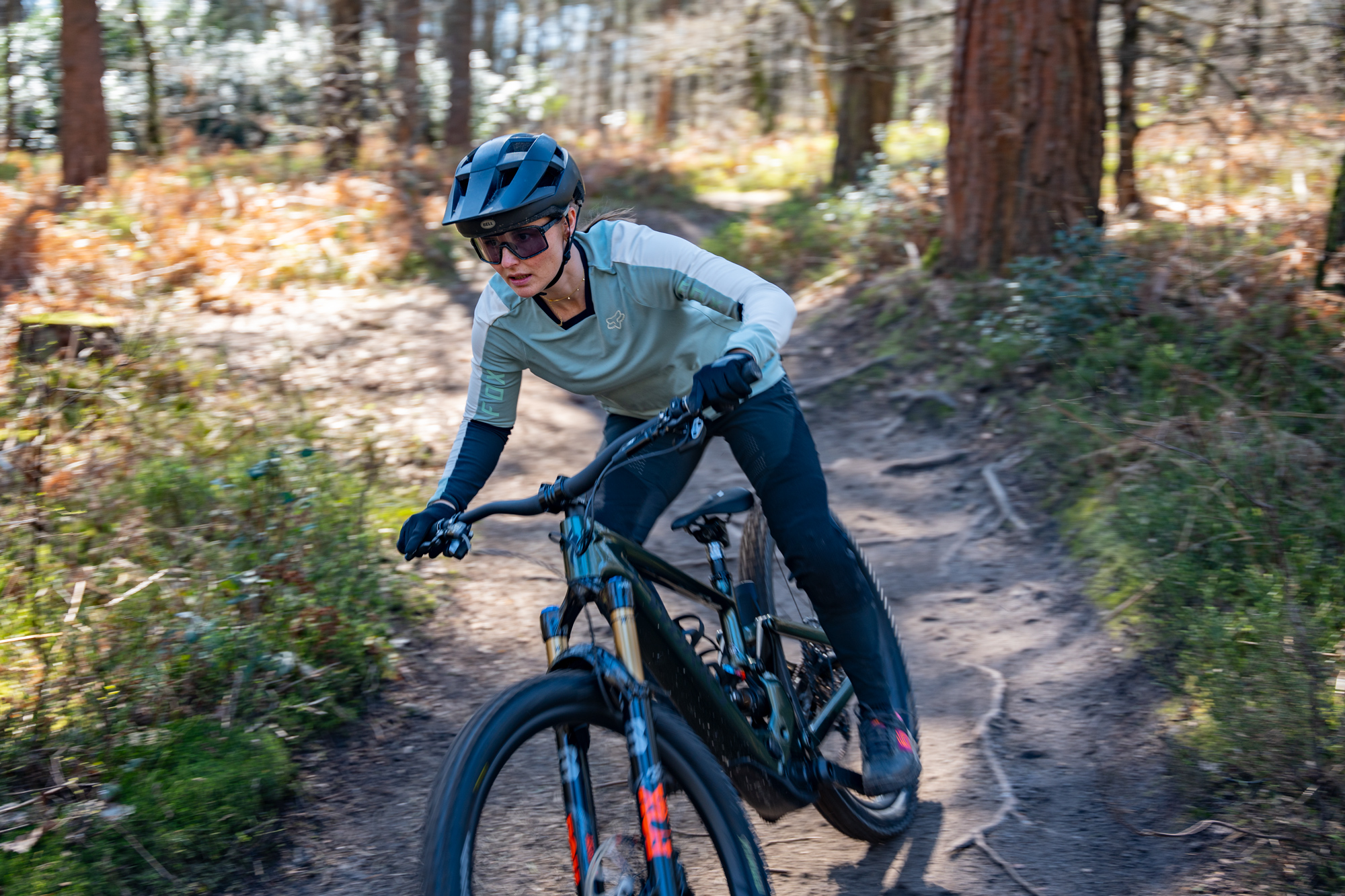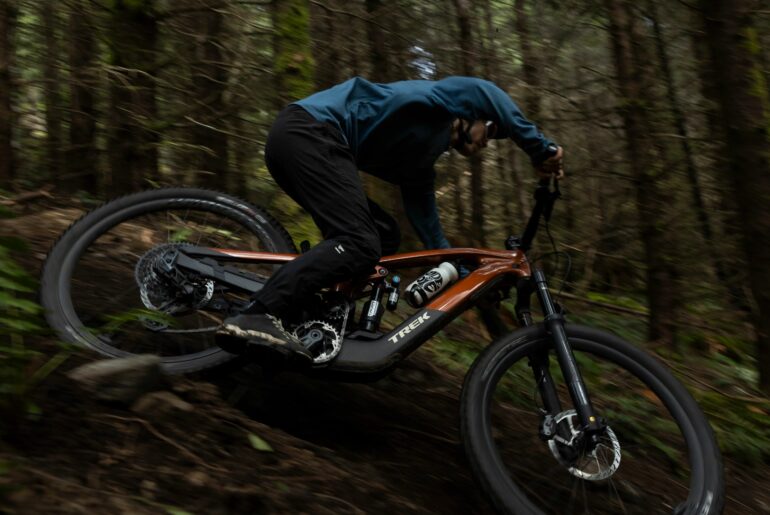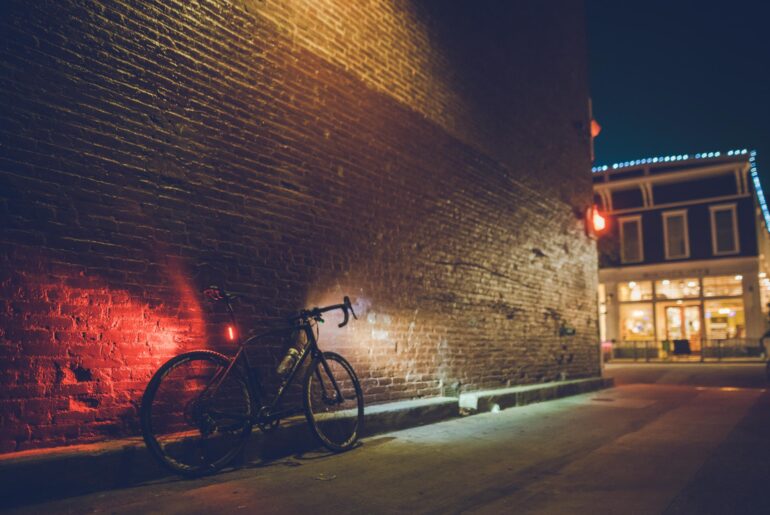So you’ve decided to purchase an electric mountain bike – great. You won’t regret it! But the next decision you need to make is whether you go for a “Full-Fat” (Full powered) bike, or one of the lightweight models (lower power, but much lighter in weight).
We’re going to discuss some of the pros and cons below – plus see what our friend Hannah thought when she got to do a direct comparison between a full-fat and lightweight bike, the Specialized Levo & the Specialized Kenevo SL.
Full-Fat E-MTB’s
So a full-fat/full-powered electric mountain bike is going to offer a few things. Firstly, more power. This means you’re going to be able to get to the top of the trails in record time, conquer hills you’d never usually make on your non-electric bike and cover more distance in a shorter amount of time. Sure, you could make life much easier for yourself, but you could also double your descending in half the amount of time it would take on a traditional bike. The second thing is a bigger battery. This means larger/longer range, and potentially more mileage (exact range for any given rider is dependent on a number of factors, including rider weight, conditions, elevation etc).
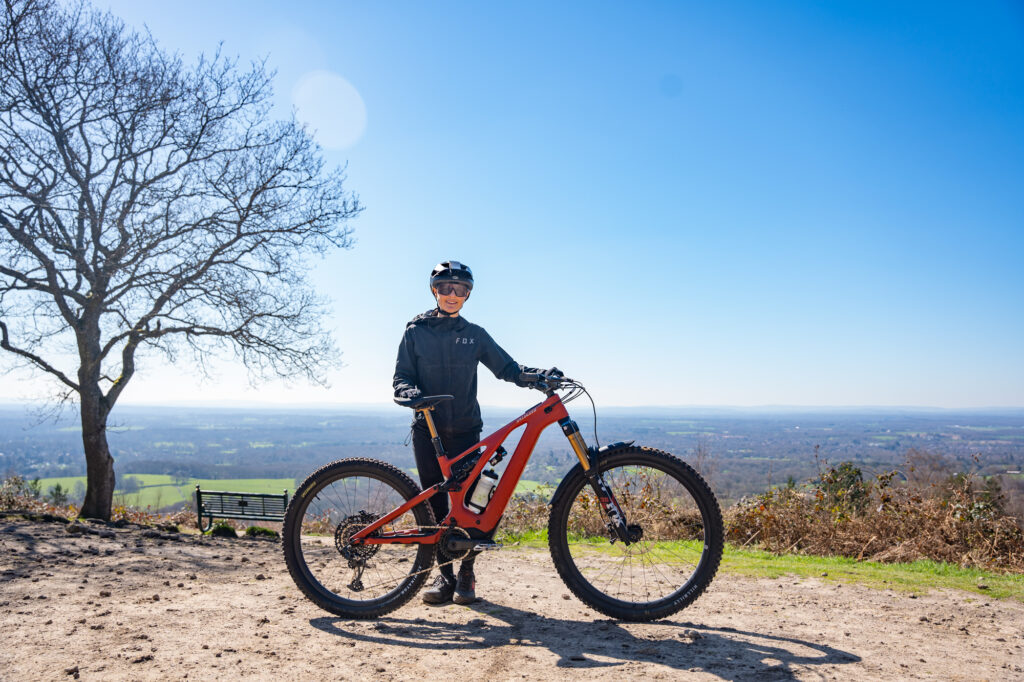
The thing that some people would consider a downside of full powered e-bikes is the weight. With the addition of a large battery and motor, the bikes obviously weigh a considerable amount more than your standard non-electric bike. For some riders, they feel that this makes the bike feel more cumbersome, less playful and harder to manoeuvre.
The flip side of this, is that some riders feel that the additional weight lowering the centre of gravity makes the bike feel far more planted than a standard bike which can help with confidence over rough/fast terrain.
Ultimately it’s down to rider preference.
Light E-MTB’s
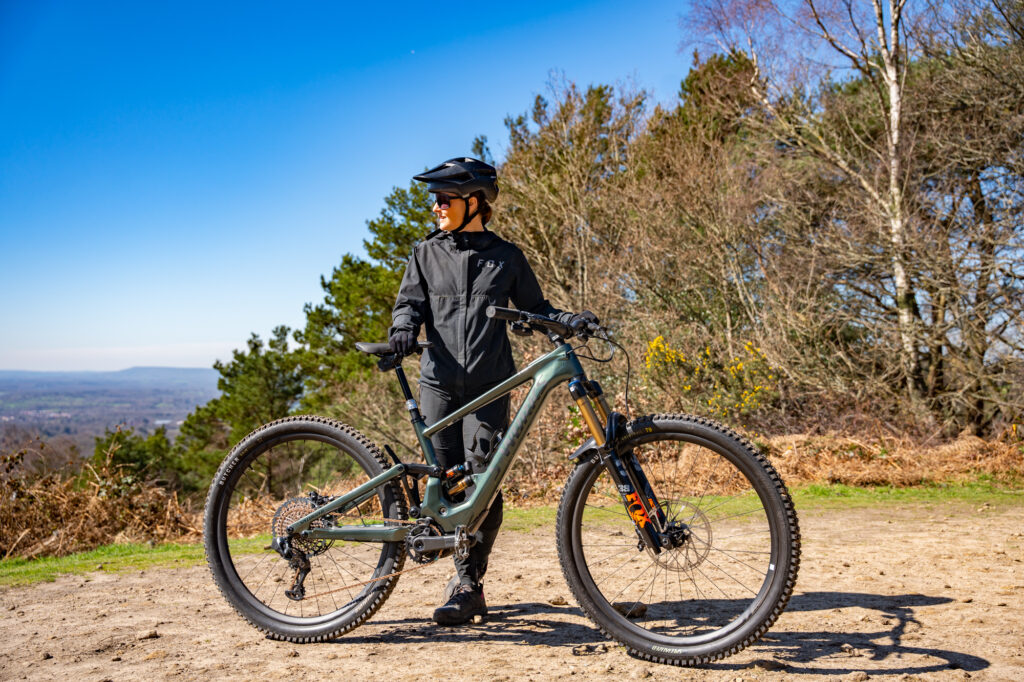
For lightweight E-MTB’s, the main benefit is that they feel far more like your standard “analogue” (non-electric) bike, with the benefit of some assistance to get you back to the top of the trails, allowing you to ride for a greater length of time without gassing out.
The lighter weight is found by reducing the size of the battery (and motor in some but not all). This of course does come with a slight penalty in terms of range and power, but the overall lighter weight tends to allow the battery to last longer than you’d imagine (again, a number of factors can affect this).
A light E-MTB will feel more “poppy”, playful and as you’d expect a non-electric bike to feel.
Considerations
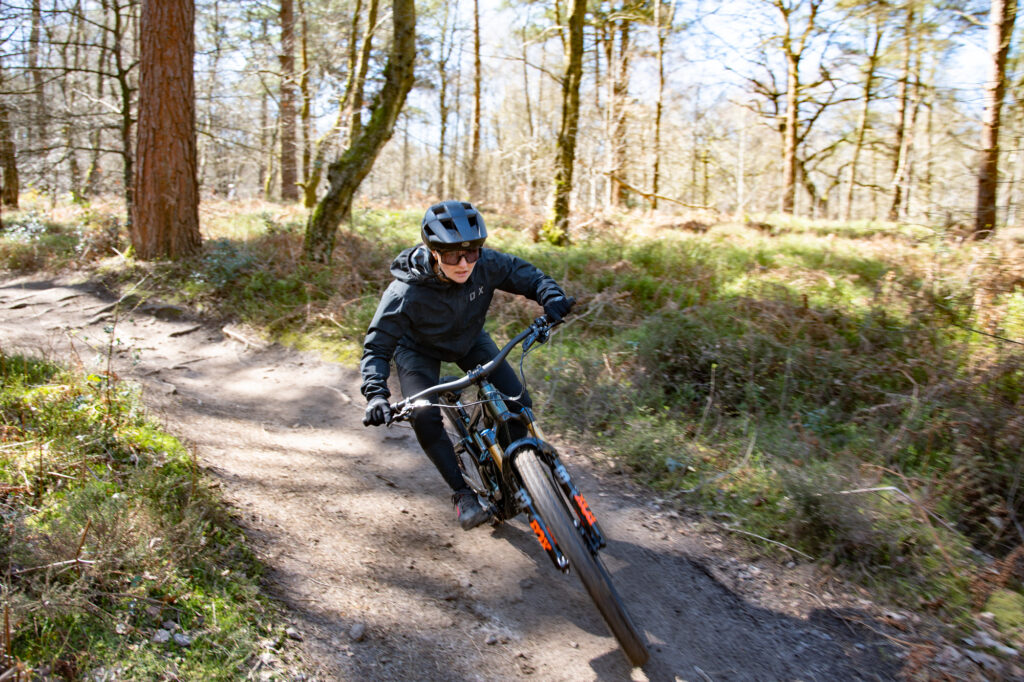
How do you want the bike to feel?
We discussed this one above but just to reiterate – there are differences between how the two bikes will feel. If you want something that feels playful and light, then a lightweight bike is the obvious choice. If you like the idea of a super plush, planted bike that feels like it sticks to the ground then perhaps a full-fat bike is for you. (We’re not saying that a lightweight bike can’t feel planted, but it definitely feels different to the full-fat).
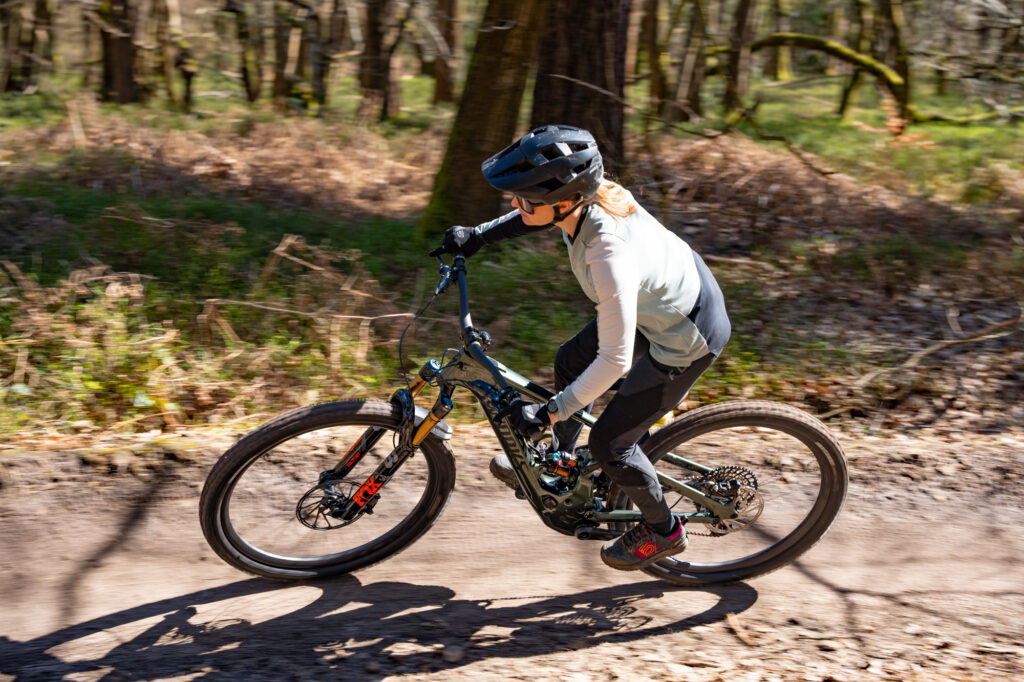
2. Who are you riding with?
More and more people are taking to electric bikes these days, which can mean the type of bikes your riding buddies use may be a deciding factor. If all your friends are on full-fat bikes, buying a lightweight bike may make your life harder – you’ll potentially either have to push more or sacrifice some battery life to keep up, which could be a disadvantage.
If you ride with mostly friends on non-electric bikes, sticking to their pace on a full-fat bike will mean less of a workout for you. If you mostly ride alone, the world is your oyster – choose based on how you want the bike to feel and how much riding you want to do.
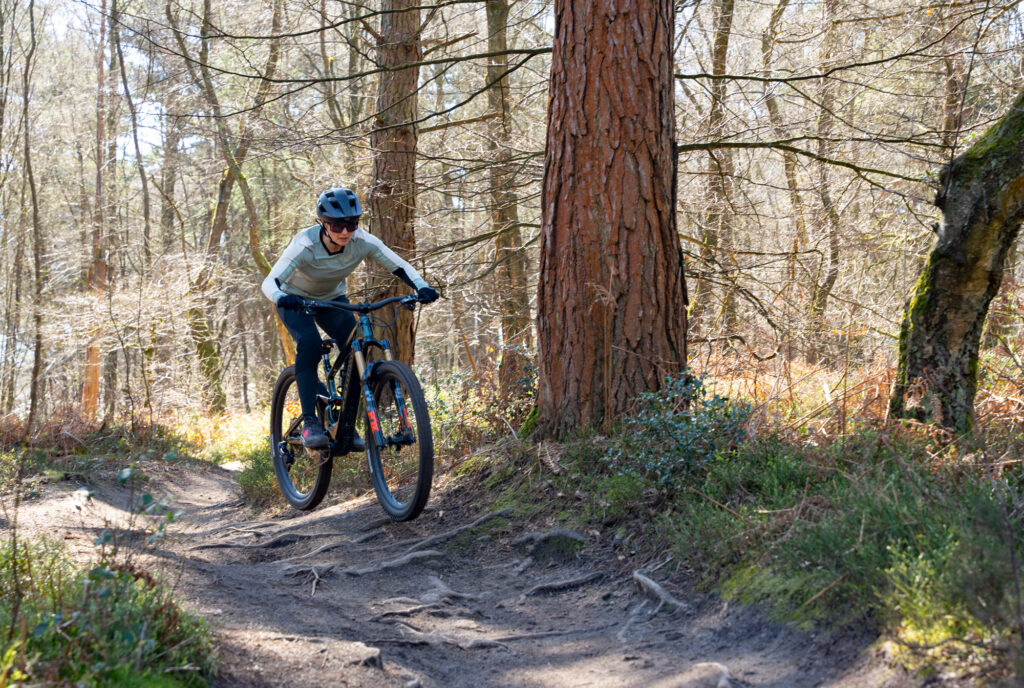
3. What sort of riding do you want to do?
If you’re strapped for time, love the downhills and want to get the most bang for your buck then you can’t go wrong with a full-fat bike. In a couple of hours you could cover the amount of trails you’d do in a full days riding on an analogue bike. If you’re pushing hard up and down you still get a great workout and you’ll make huge progress on your skills due to how much more descending you can do.
If you want a little bit of extra assistance but you still want your bike to feel as close to a non-electric bike as possible then the lightweight option could be for you. You’ll still be able to get more trails in but if you love a pedal it will work your legs slightly harder.
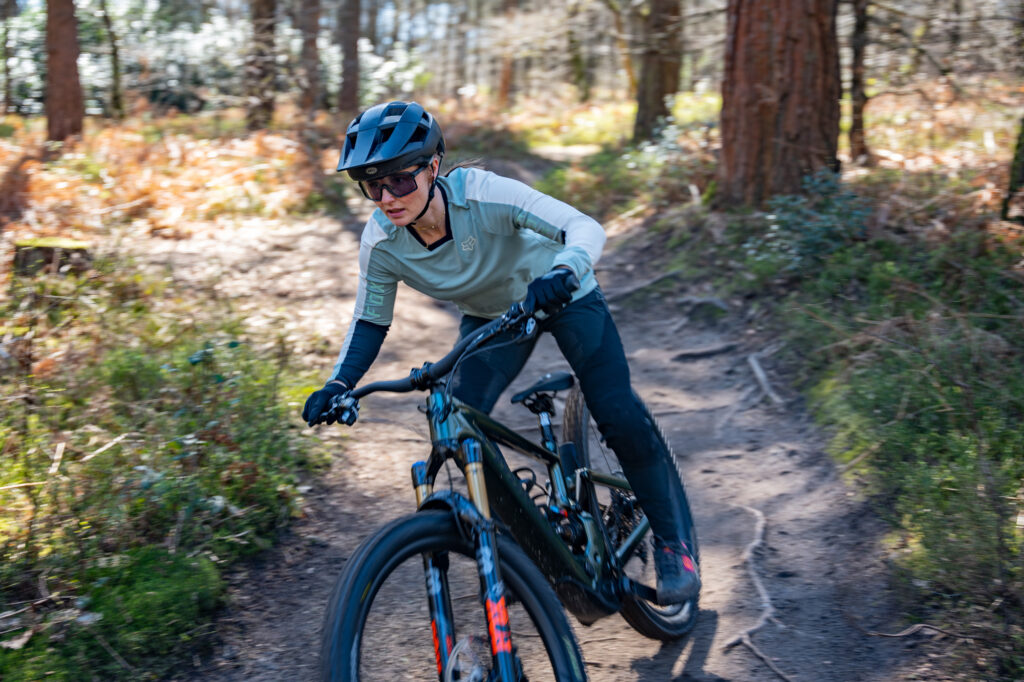
4. Transporting the bike
There is an obvious weight difference of up to 5+ kilograms between a lightweight and a full-fat electric bike. Depending on how you’re transporting your bike this could be a factor in your decision. Getting a full-fat e-bike onto roof bars on a car can be tricky if you don’t have the strength, whereas if you’re just rolling it into a van is a whole lot easier.
Ultimately, no matter which type of E-MTB you choose, you’re almost guaranteed a great time. What’s not to love about being able to double up the amount of trails you tackle per ride? If we’ve swayed you, why not click below to check out our range of E-MTB’s, or head into one of our 12 stores for more info.

